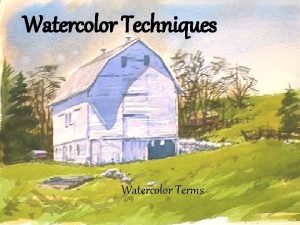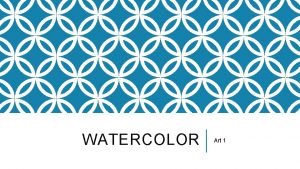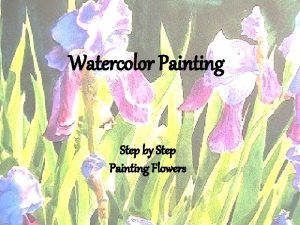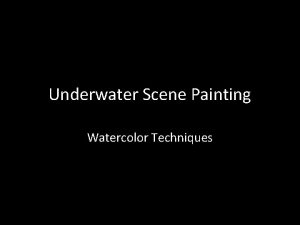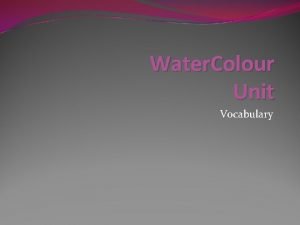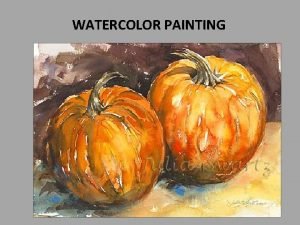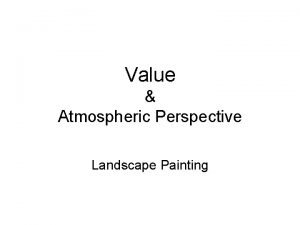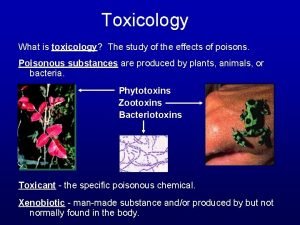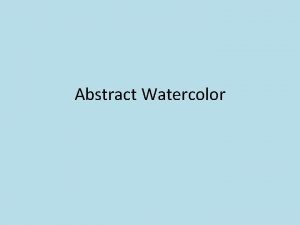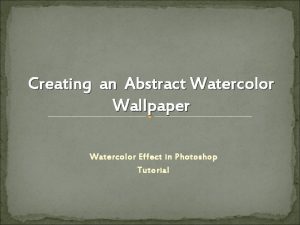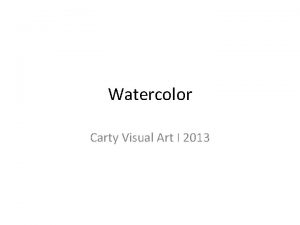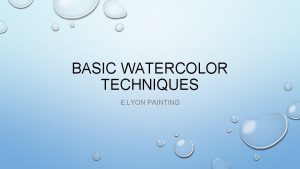Watercolor Terms Watercolor Techniques Watercolor Terms Watercolor Techniques














- Slides: 14

Watercolor Terms Watercolor Techniques Watercolor Terms

Watercolor Techniques • Alcohol-Drops of alcohol added to wet paint dries quicker than the surrounding paint to create a unique texture.

Watercolor Techniques • Dry Brush –Brush loaded with paint onto dry paper.

Watercolor Techniques • Glazing-Glazes are easy to accomplish using a little patience between steps. You must let each wash dry completely before applying the next transparent layer of pigment.

Watercolor Techniques • Lifting-Removing paint from the paper using a sponge or a soft paper towel.

Watercolor Techniques • Masking-Cover areas to preserve the white of the paper. You can use tape or masking fluid.

Watercolor Techniques • Plastic Wrap –Plastic wrap is applied to wet paint and then removed after drying to create a textured look.

Watercolor Techniques • Salt-Apply salt to wet paint areas of painting to create a speckled texture.

Watercolor Techniques • Scratching –Scratch into wet paper to create texture.

Watercolor Techniques • Splattering-The flicking of paint onto the paper. • Stamping-Dabbing the paint onto the paper with a sponge.

Watercolor Techniques • Tissue Paper –Tissue paper is applied to wet paint and then removed to create a textured look.

Watercolor Techniques • Wax Resist-Wax is applied to areas you want the watercolor pigment to repel the surface.

Watercolor Techniques • Wet-in-wet-a process of adding paint into a wet area that already has been pre-wet with clean water.

Watercolor Experiment Painting Alcohol Wet-in-wet Wax Resist Scratching Splattering Salt Masking Plastic Wrap Tissue paper
 Watercolor terms
Watercolor terms Dry brush watercolor definition
Dry brush watercolor definition How to paint spring flowers in watercolor
How to paint spring flowers in watercolor Paint underwater scene
Paint underwater scene Watercolor vocabulary
Watercolor vocabulary William blake watercolor
William blake watercolor Landscape atmospheric perspective
Landscape atmospheric perspective Combining like terms lesson
Combining like terms lesson Polynomial classification
Polynomial classification Fonctions techniques
Fonctions techniques What is toxicology
What is toxicology Diamante poem meaning
Diamante poem meaning Saq and laq
Saq and laq Horizontal strategic alliance
Horizontal strategic alliance It is the sum of the terms of a geometric sequence. *
It is the sum of the terms of a geometric sequence. *
